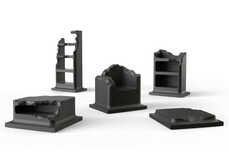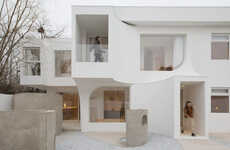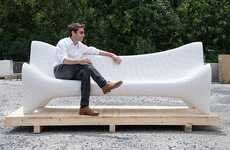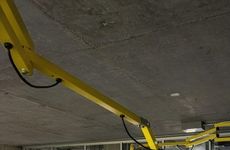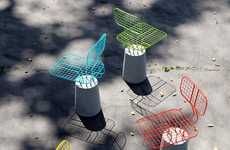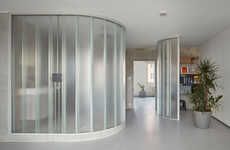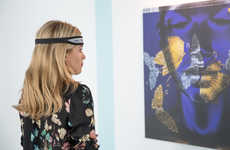
David Umemoto's Sculptures are Studies on Brutalism
Joey Haar — July 22, 2017 — Art & Design
References: archinect
Every architectural project begins with modelling, and while David Umemoto's concrete sculptures are a direct reference to brutalism, they aren't likely to see production on a building's scale. That's because the sculptures aren't actually designed to be buildings. Rather, they're studies in volume and form as it relates to concrete.
Through David Umemoto's sculptures aren't buildings, they have many structural components that buildings do have. Several of the volumes' edges are jagged, looking like stairs, and there are further punctuations around the sculpture that look like windows and doors. In most cases, these gestures are placed in inaccessible areas or an nonsensical angles, giving the sculpture the appearance of a more drab work by MC Escher.
Through David Umemoto's sculptures aren't buildings, they have many structural components that buildings do have. Several of the volumes' edges are jagged, looking like stairs, and there are further punctuations around the sculpture that look like windows and doors. In most cases, these gestures are placed in inaccessible areas or an nonsensical angles, giving the sculpture the appearance of a more drab work by MC Escher.
Trend Themes
1. Brutalist Sculptures - Opportunities for disruptive innovation in the art industry for the creation of 3D printed sculptures that interpret and replicate brutalist architecture.
2. Concrete Art - Opportunities for disruptive innovation in the design and manufacturing industries for the development of new techniques and materials to create concrete sculptures with enhanced strength, durability, and aesthetic appeal.
3. Architectural Experimentation - Opportunities for disruptive innovation in the architecture industry for experimentation with unconventional shapes and forms to create unique and visually stunning buildings and structures.
Industry Implications
1. Art - The art industry can benefit from incorporating concrete sculpture techniques inspired by brutalist architecture to create unique and unconventional art pieces.
2. Manufacturing - The manufacturing industry can benefit from researching and developing new materials and techniques to create stronger and more durable concrete sculptures in larger scales.
3. Architecture - Architects can benefit from experimenting with unconventional shapes and forms inspired by concrete sculptures to create visually stunning and unique buildings and structures.
0.8
Score
Popularity
Activity
Freshness


